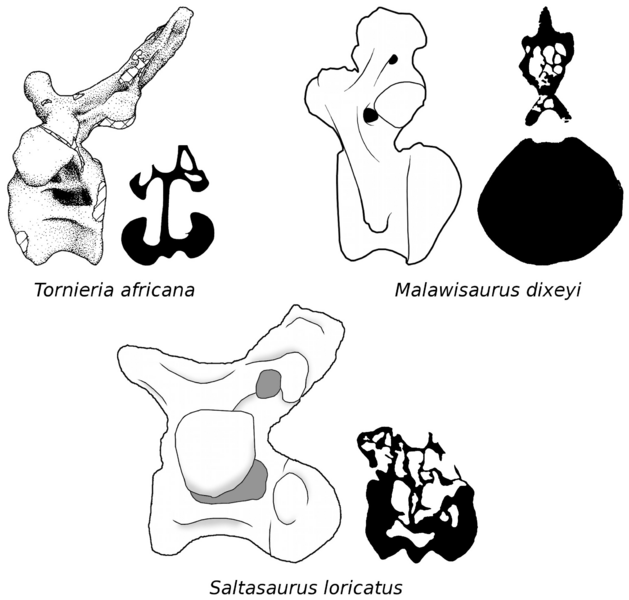Archivo: Sauropod caudal pneumaticity

Descripción: Caudal pneumaticity varies among sauropods. In the diplodocid Tornieria, the first 15–20 caudal vertebrae have neural arch laminae and fossae, and lateral pneumatic foramina opening into large internal chambers. Images traced from Remes ([51]: fig. 31 [lateral view]) and Janensch ([72]: fig. 7 [cross-section]); the two views are from different vertebrae. In the basal titanosaurian Malawisaurus, caudal pneumaticity is restricted to a handful of proximal caudal vertebrae, in which the neural arches are honeycombed with pneumatic chambers but the vertebral centra are solid. Images traced from Wedel ([12]: fig. 2A [lateral view] and 2C [cross-section]). In the derived titanosaurian Saltasaurus, the first 20–25 caudal vertebrae have large external fossae but small external foramina, and both the neural arches and centra are honeycombed with chambers. Images traced from Powell ([59]: plate 53 [lateral view]) and Cerda et al [20]: fig. 4F [cross-section]); the two views are from different vertebrae.
Título: Sauropod caudal pneumaticity
Créditos: Wedel MJ, Taylor MP (2013) Caudal Pneumaticity and Pneumatic Hiatuses in the Sauropod Dinosaurs Giraffatitan and Apatosaurus. PLoS ONE 8(10): e78213. doi:10.1371/journal.pone.0078213
Autor(a): Mathew J. Wedel, Michael P. Taylor
Términos de Uso: Creative Commons Attribution 3.0
Licencia: CC BY 3.0
Enlace de Licencia: https://creativecommons.org/licenses/by/3.0
¿Se exige la atribución?: Sí
Usos del archivo
La siguiente página enlaza a este archivo:

